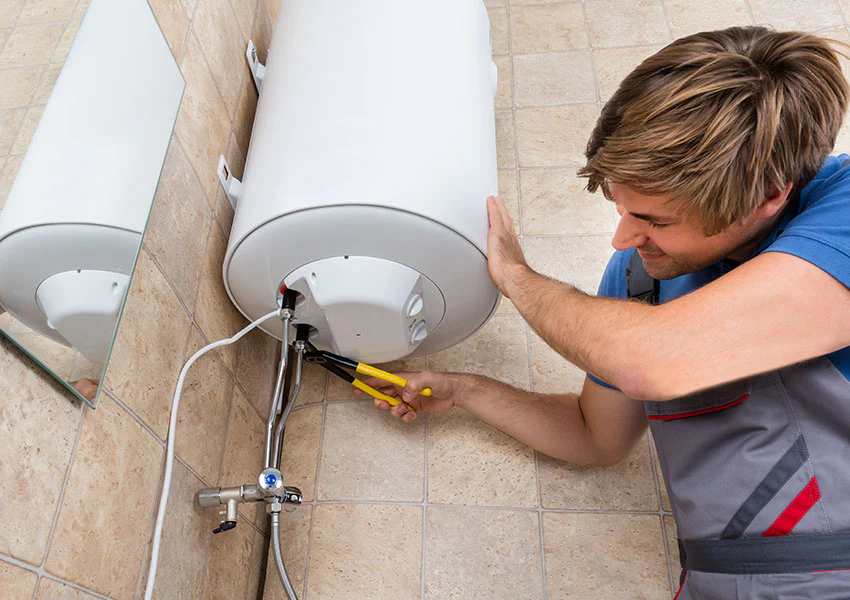Everyone has his or her own opinion about Tips For Maintaining Your Hot Water Heater.

Warm water is necessary for day-to-day comfort, whether it's for a revitalizing shower or cleaning dishes. To guarantee your warm water system runs efficiently and lasts much longer, normal upkeep is essential. This article supplies useful pointers and insights on how to keep your home's warm water system to prevent interruptions and costly repairs.
Introduction
Keeping your home's warm water system may seem daunting, but with a few basic actions, you can guarantee it runs smoothly for years to find. This guide covers every little thing from understanding your warm water system to DIY maintenance ideas and recognizing when to contact specialist aid.
Importance of Keeping Your Warm Water System
Regular maintenance not only extends the life expectancy of your hot water system however additionally guarantees it operates efficiently. Overlooking upkeep can bring about decreased effectiveness, greater energy expenses, and even early failing of the system.
Signs Your Hot Water System Requirements Maintenance
Understanding when your hot water system requires attention can stop major concerns. Keep an eye out for indicators such as inconsistent water temperature, weird noises from the heating system, or rustic water.
Understanding Your Hot Water System
Prior to diving into maintenance jobs, it's valuable to recognize the fundamental components of your hot water system. Typically, this consists of the hot water heater itself, pipelines, anode rods, and temperature controls.
Month-to-month Upkeep Tasks
Normal regular monthly checks can help capture small problems before they intensify.
Flushing the Hot Water Heater
Purging your water heater removes debris buildup, boosting effectiveness and prolonging its life.
Checking and Changing Anode Rods
Anode rods prevent deterioration inside the container. Inspecting and changing them when worn is crucial.
Evaluating and Adjusting Temperature Level Setups
Adjusting the temperature settings makes certain ideal performance and safety and security.
DIY Tips for Upkeep
You can do several upkeep tasks on your own to keep your warm water system in top problem.
Checking for Leaks
On a regular basis check pipes and links for leaks, as these can result in water damage and greater expenses.
Evaluating Stress Relief Valves
Testing the stress relief valve guarantees it works correctly and protects against too much stress accumulation.
Insulating Pipelines
Protecting warm water pipes lowers warm loss and can save power.
When to Call a Professional
While DIY upkeep is useful, some concerns need specialist expertise.
Complicated Concerns Requiring Specialist Help
Examples consist of major leaks, electrical troubles, or if your water heater is constantly underperforming.
Regular Professional Upkeep Conveniences
Professional maintenance can include detailed evaluations, tune-ups, and guaranteeing conformity with safety and security standards.
Final thought
Routine upkeep of your home's hot water system is necessary for performance, longevity, and expense savings. By following these tips and knowing when to seek professional help, you can ensure a dependable supply of hot water without unexpected interruptions.
How to Maintain an Instant Hot Water Heater
Before tinkering with your hot water heater, make sure that it’s not powered on. You also have to turn off the main circuit breaker and shut off the main gas line to prevent accidents. Also turn off the water valves connected to your unit to prevent water from flowing into and out of the appliance. 2. When you’re done, you have to detach the purge valves’ caps. These look like the letter “T” and are situated on either side of the water valves. Doing so will release any pressure that has accumulated inside the valves while at the same time avoid hot water from shooting out and burning your skin. 3. When the purge valves’ caps are removed, you have to connect your hosing lines to the valves. Your unit should have come with three hoses but if it didn’t, you can purchase these things from any hardware or home repair shops. You can also get them from retail stores that sell water heating systems. Read the user’s manual and follow it to complete this task properly. When the hosing lines are connected, open the purge port’s valves. 4. You should never use harsh chemical cleaners or solutions when cleaning your unit. Make use of white vinegar instead. It should be undiluted and you’ll probably use about 2 gallons. 5. Now flush your water heater. This task should probably take about 40 minutes. We can’t give you specific directions for this because the procedure is carried out depending on the type, model and brand of your heater. With that being said, refer to the user’s manual. 6. When you’re done draining the unit, you have to turn off the purge port valves again. Remove the hosing lines that you earlier installed on each of the water valves. Put the valve caps (purge port) back in their respective places and be very careful so as not to damage the rubber discs that are found inside these caps. 7. Now that everything’s back in place, check your user’s manual again to find out how to reactivate your water heating system. 8. Once it is working, turn one of your hot water faucets on just to let air pass through the heater’s water supply pipes. Leave the tap on until water flows smoothly out of it. https://www.orrplumbing.com/blog/2014/september/how-to-maintain-an-instant-hot-water-heater/

Do you enjoy reading about How to Maintain Your Water Heater & Prolong its Life? Give feedback further down. We will be happy to hear your opinion about this content. Hoping that you visit us again in the near future. Be sure to pause to distribute this entry if you enjoyed it. We thank you for your readership.
Book A Free Estimate